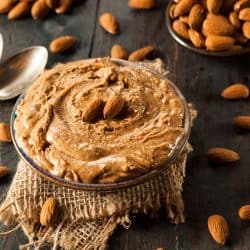As many consumers switch to almond butter as a tasty alternative to peanut butter, questions often arise about the best ways to keep it creamy and moist. But what factors contribute to almond butter going dry in the first place? And how can you make it creamier after you make or purchase it? We have researched ways to make almond butter creamier and prevent dryness. In this post, we will cover them for you.
Here are steps that you can take to increase creaminess when your almond butter goes dry:
- Method 1: Add oil to the butter
- Method 2: Put it in the microwave
- Method 3: Place it on the stove
Making almond butter creamy may sound like a simple task, and for the most part, it is. However, it doesn't mean that it will stay creamy forever. Continue reading to learn more details about how to prevent this nut butter from becoming dry and how to restore its creamy texture when it does.
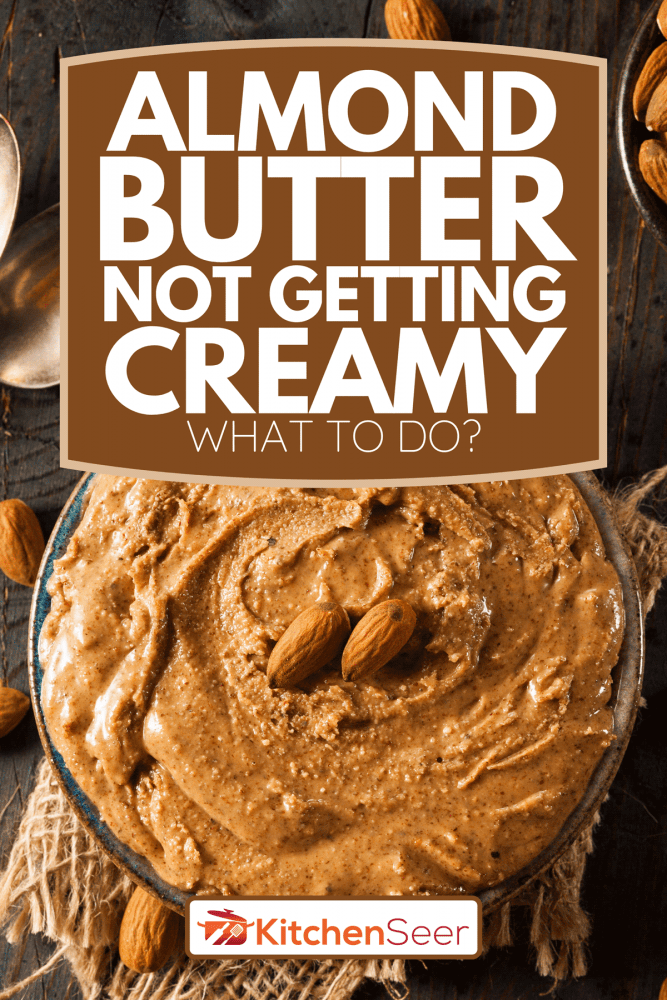
Steps To Make Almond Butter Creamy Again
You'll first want to check the expiration date of your almond butter before taking steps to make it creamy again. If the almond butter has expired, it's best to simply purchase a new jar or make a new batch. And when making a new batch, be sure to write the batch date on the jar so that you can keep a tab on its expiration date--which is usually anywhere from three to six months from the batch date.
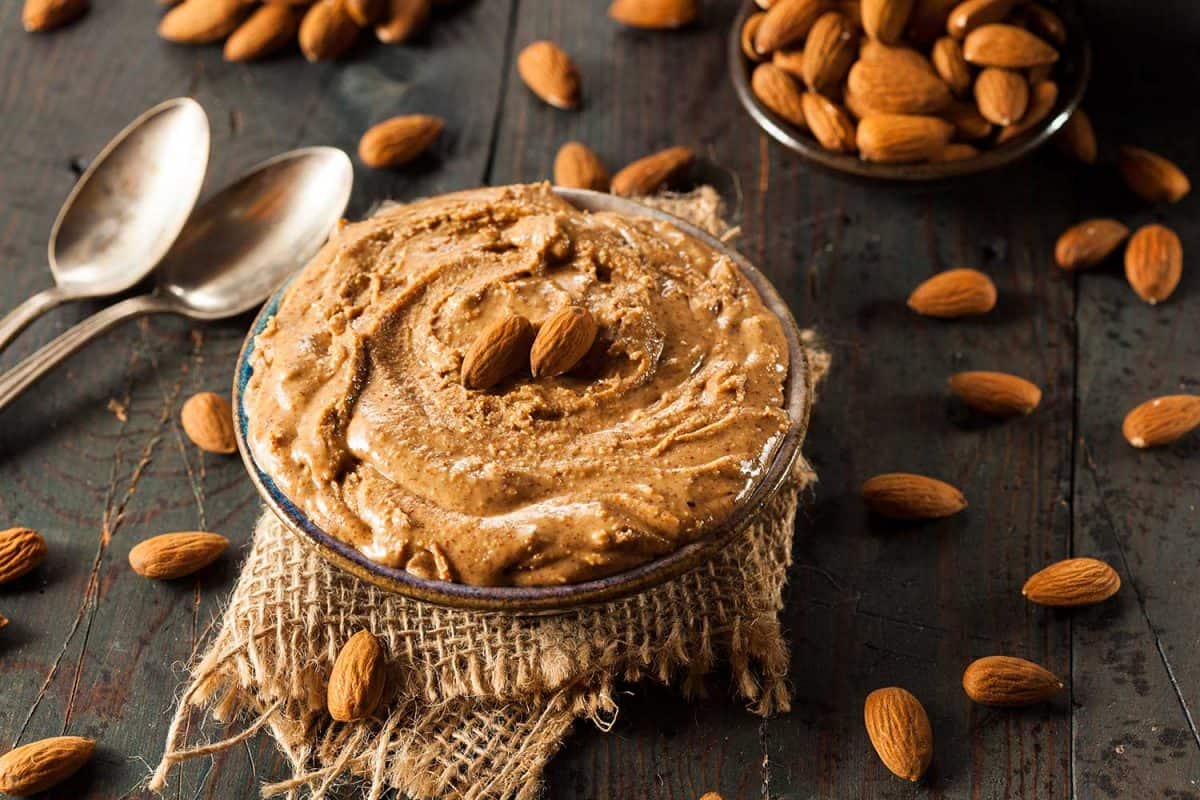
Method 1: Add oil to the butter
This method works best if you're trying to add creaminess to the entire jar. Start by deciding on the type of oil you want to add to your almond butter. Common choices include peanut, canola, and coconut oil.
If you use coconut oil, place a tablespoon of coconut oil in a saucepan and heat it up for one minute. Next, pour the coconut oil into the almond butter jar and stir it using a spoon. As the coconut oil mixes with the butter, it will loosen up the nut butter so that it is easier to spread.
If you're using canola or peanut butter, you can simply add a tablespoon of either butter to the almond butter jar and stir it with a spoon or spatula. You'll want to ensure that the oil reaches the bottom of the jar, so it may also be helpful to remove the almond butter from the jar and stir it in a mixing bowl.
Method 2: Put it in the microwave
Start by removing a few tablespoons of almond butter from the jar and placing it in a microwave-safe bowl. Be sure to only remove the amount that you're planning to use for your meal or snack. Then, add 1/2 teaspoon of water to the butter.
Next, place the microwave on a high setting for about 7 to 15 seconds. Ensure that the bowl is covered so that the almond butter does not cause spatter on the microwave walls.
Next, take a spoon and dip it in the almond butter to check the consistency. If it still feels dry, microwave it for another 7 to 10 seconds.
Once the almond butter reaches the desired consistency, remove it from the microwave and stir it for 10-15 seconds to distribute the heat and remove any hot spots.
Method 3: Place it on the stove
You can also make your own almond butter creamier by heating it in the oven. This method is specific to almond butter that is homemade and currently kept in a mason jar. Do not use this method in plastic jars as they will melt. If you have store-bought almond butter, be sure to first place it in a mason jar before using this method.
Start by adding 2 cups of water to a small saucepan. Next, set the saucepan on the stove and place it on low heat. Place the jar in the saucepan or remove the amount you want to consume in a separate glass jar and add it to the saucepan.
Next, add 1 to 2 teaspoons of water to the mason jar. The amount doesn't need to be precise, but you'll want to ensure that you don't add too much water, or else the butter will become runny. The water will soften the butter so that it melts quicker and easier.
Leave the jar in the water and stir the almond butter every few seconds until it melts and softens to your desired consistency. The melting process shouldn't take more than 1 to 5 minutes. If you begin to notice a burning smell coming from the jar, remove the almond butter immediately to prevent the entire jar from burning. If it's burnt, you may be able to salvage the top portions of the jar. Once the almond butter reaches your desired consistency, turn off the stove and remove the jar from the saucepan.
Read more details about this saucepan on Amazon.
Is it normal for almond butter to separate?
Yes. It's completely normal for almond butter to separate. This is due to the natural oils that the butter contains. When almonds are crushed into butter by a blender, the oils are extracted from the nuts. Over time, the butter will naturally separate, though it can be easily re-blended. Other factors such as environmental conditions and storage can also affect the rate and extent at which the nut butter separates.
Why is my almond butter not getting creamy?
If you have homemade almond butter that isn't creamy, chances are that it is either not blended enough or the nuts have been overcooked when preparing the nut butter. To prevent this, you can add honey to help emulsify the almond butter during the blending process. You can also use agave syrup or maple syrup as well.
For every cup of unblended nuts, you'll want to add a teaspoon of honey or syrup to help increase the creaminess of the nut butter. You can also add the syrup after the butter has already been blended to improve the consistency.
The grinding stage is essential in making almond butter. It's best to use a high-speed blender when making the butter so that the nuts are ground fast enough and high enough to break them down and release the natural oils from them. Depending on the speed and power of your blender, you'll typically need to blend the nuts anywhere from 3 to 4 minutes on high speed to create a creamy consistency. At this point, the fats and the nuts will melt and create a smoother consistency with fewer chunks.
When making homemade almond butter, it's best to add oils to the butter when increasing its creaminess. Adding water-based liquids will cause the nut butter to dry out eventually. Adding water to almond butter is fine if you plan to re-heat a small portion for immediate consumption.
However, if you want your nut butter to maintain a creamy consistency after it is stored, it's best not to use any liquids for hydration--this includes milk, flavored liquid extracts, and juice.
Check out this blender on Amazon.
Why is my homemade almond butter dry?
If your homemade nut butter is dry, chances are that the nuts are either over-roasted, not ground well enough, or it has been stored improperly. Usually, you'll only need to roast the almonds for about 10 minutes at a temperature of about 350 degrees Fahrenheit. Roasting them longer than this will cause them to dry out, affecting the butter's consistency once it's blended.
If your nut butter has gone dry after it's been stored, you may want to look into your storage environment. It's best to store the nut butter in a cool place with a jar that has a tight lid. If air can seep into the jar or if it's stored in extreme temperatures (over 80 degrees Fahrenheit), nut butter may dry out prematurely.
Is Almond Butter better for you than peanut butter?
Not necessarily. Peanut butter and almond butter have roughly the same amount of calories, carbohydrates, fat, and sugar--though it's worth noting that peanut butter has a slightly higher amount of sugar than almond butter. They are both great sources of vitamins, micronutrients, and minerals, including protein, magnesium, iron, and calcium.
However, fewer people have allergic reactions to almond butter than peanut butter. So if you have a nut allergy, this can be a deciding factor in determining which nut butter may be best for you.
See this peanut butter on Amazon.
Wrapping Things Up
Making almond butter creamy again is a fairly simple process. Whether you have homemade butter or storebought, you'll find that simply adding a bit of oil and/or heating it can quickly give it the creamy consistency that you desire.
Before you go, be sure to check out some of our other posts:
Can You Bake With Sunflower Butter?
Sunflower Butter Vs Peanut Butter – How Do They Compare?




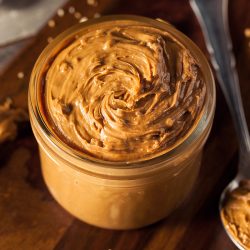

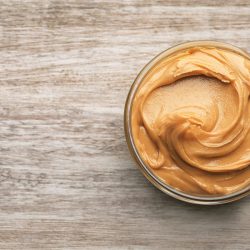
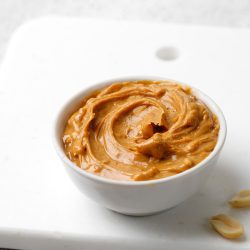
![A glass jar with creamy peanut butter on wooden table, Can Peanut Butter Go Bad In Heat? [Yes! Here's How To Tell If It's Spoiled!]](https://kitchenseer.com/wp-content/uploads/2022/10/Glass-jar-with-creamy-peanut-butter-on-wooden-table-250x250.jpg)
